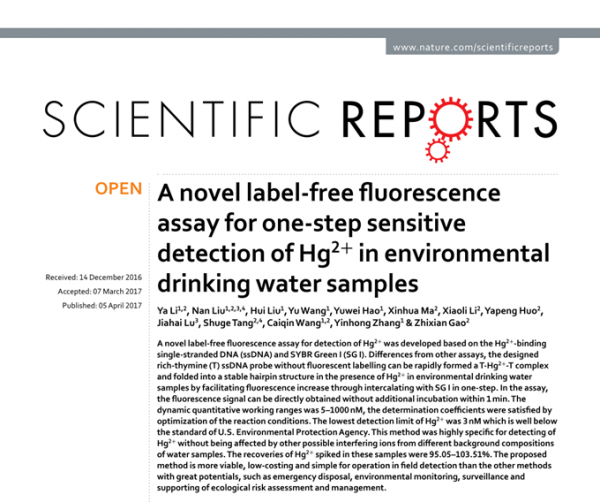Recently, a new study of Prof. Wang Yu’s team from the School of Public Health of LZU was published on Scientific Reports, an online journal of Nature. Their research results were integrated in a paper, entitled "A novel label-free fluorescence assay for one-step sensitive detection of Hg2+ in environmental drinking water samples" with Prof. Zhang Yinhong and Liu Nan, an associate researcher as its corresponding authors. The first author is Li Ya, a master degree candidate of LZU.
Heavy metal pollution has arose extensive concerns on a global scale. Human health has been threatened for a long time on account of people’s access to contaminated natural water and drinking water, especially with extremely poisonous mercury. Mercury ion, a well-known neurotoxin, is not biodegradable to some degree. It gathered in the body with biological amplification, probably causing varied diseases such as kidney failure, prenatal brain damage, motor and cognitive impairment, hearing loss and vision problems and immune system dysfunction, even death. Such limits as precision instruments required for traditional testing methods, pre-processing of complex sample, a large size of samples and professional training for operations all lead to restrictions on its wide application. To address the problem on rapid detection of trace mercury in drinking water, Li Ya, Zhang Yinhong and Liu Nan et al. has realized one-step fluorescence rapid detection with no mark of Hg2+, with the theory that single stranded DNA can form stable complexes T- Hg2+-T with Hg2+ as a basis, thus showing great potentials in the emergency disposal, environmental monitoring, risk assessment and management.

(Translated by Li Rui; proofread by Zhang Lu)




